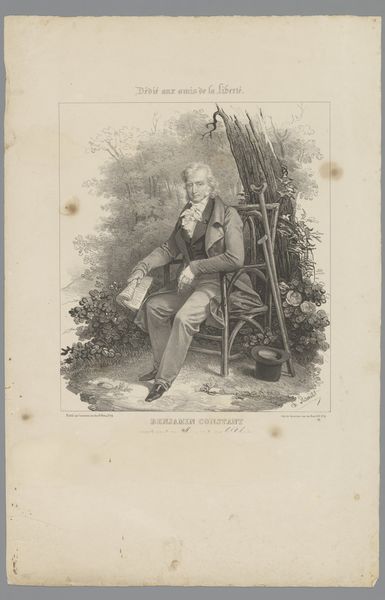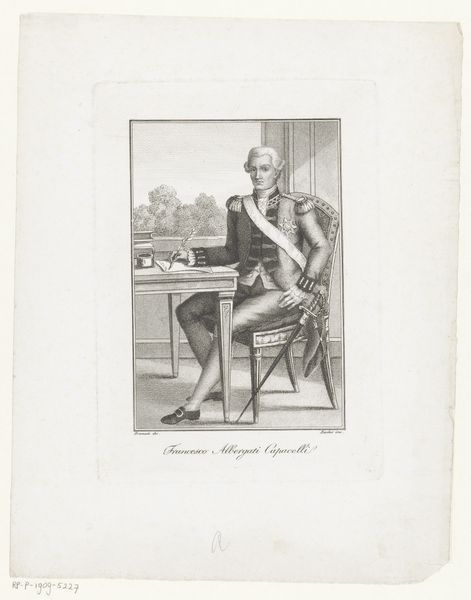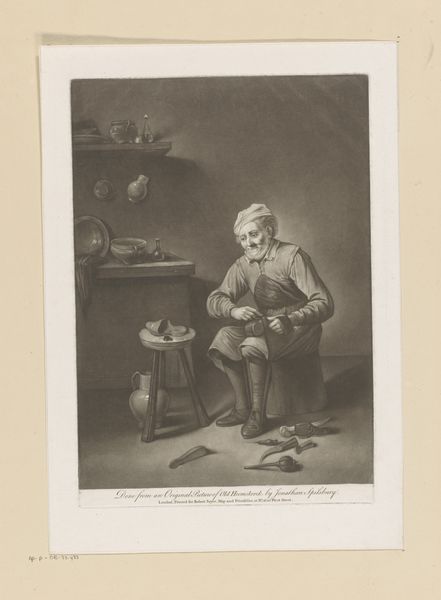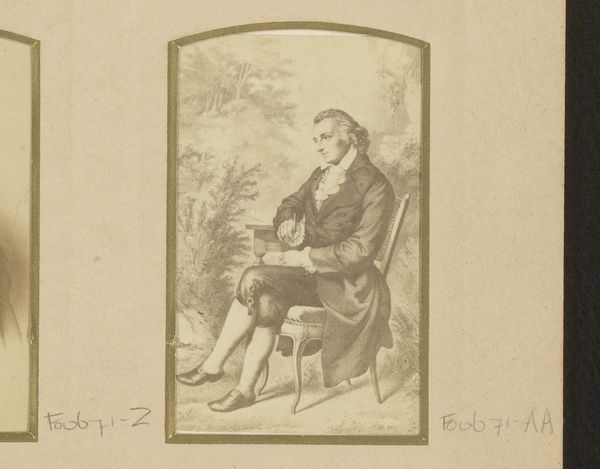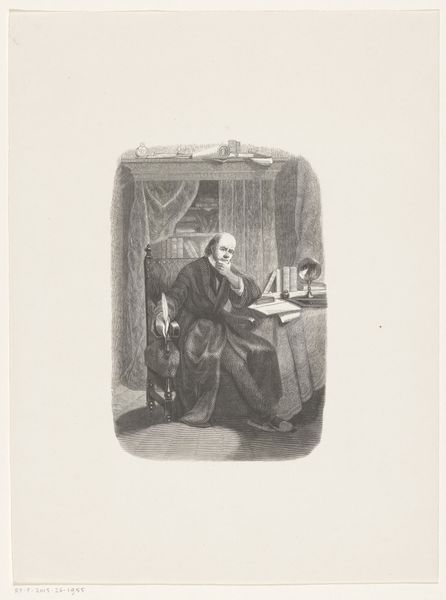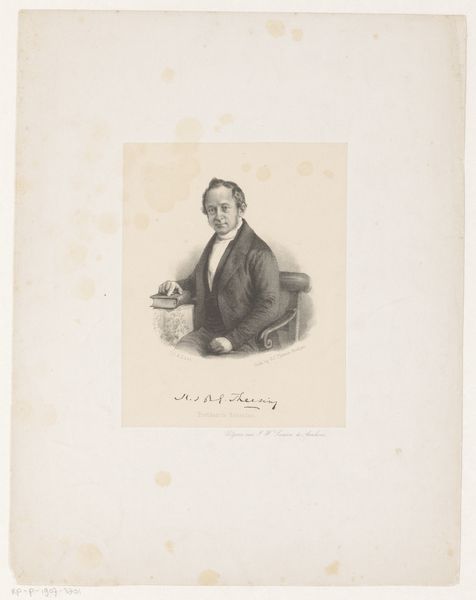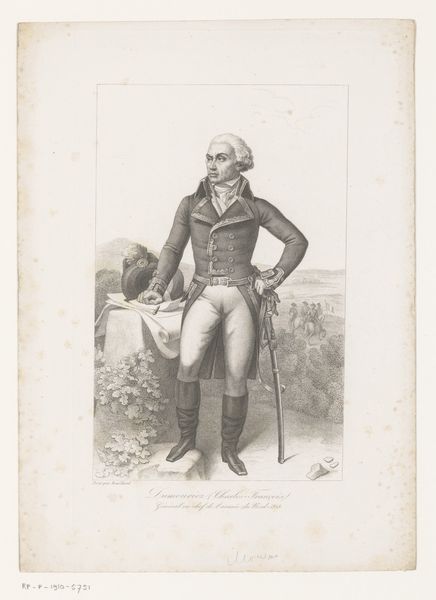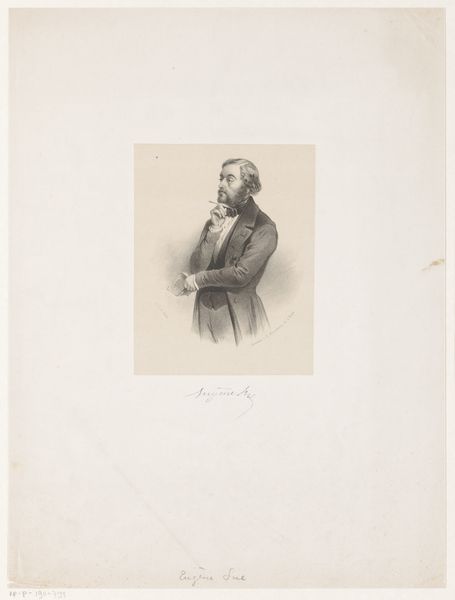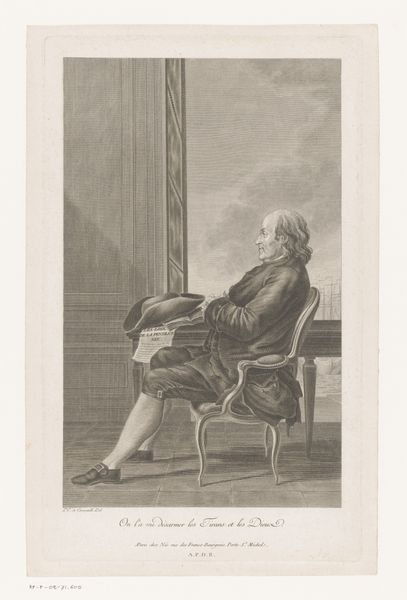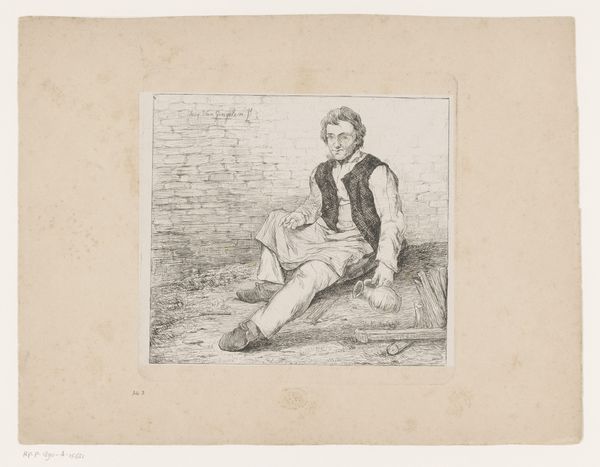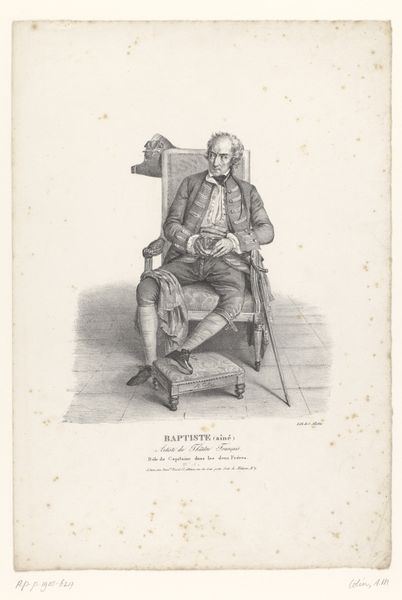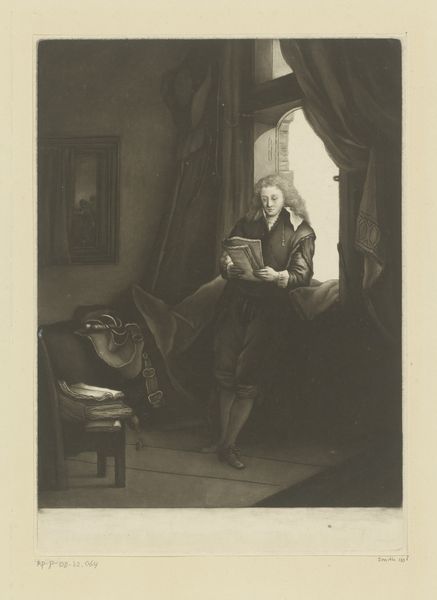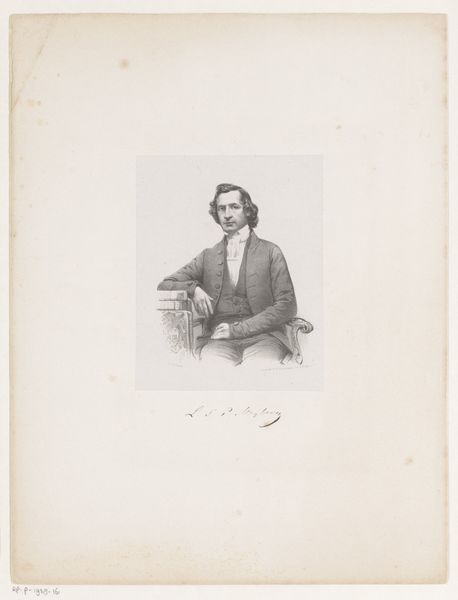
painting
#
portrait
#
painting
#
romanticism
#
genre-painting
#
academic-art
#
watercolor
Dimensions: height 310 mm, width 225 mm
Copyright: Rijks Museum: Open Domain
Curator: Welcome. We're standing before Willem Pieter Hoevenaar's "Caspar van Baerle op een stoel voor een huis," a watercolor painting, likely rendered between 1818 and 1863. Editor: There’s a charming melancholy to this work. The figure is seated in what appears to be a simple courtyard, bathed in soft light. The cool tones create an almost sepia effect, which imbues it with a subtle sense of nostalgia, wouldn’t you agree? Curator: Absolutely. Structurally, the artist has created a harmonious balance, with the sitter occupying the central position, while elements of background like the brick wall and garden trellis offering both depth and spatial anchoring. It guides our eyes carefully. Note how the hat on the lower left creates a deliberate asymmetrical weighting. Editor: Observe that Baarle is holding what looks like a letter or a document. Paper in art often symbolizes knowledge, communication, and record-keeping. Perhaps this letter signifies Baarle's scholarly pursuits, the intellectual endeavors for which he’s remembered. Or, depending on its contents, a different story can be teased out… perhaps one filled with unease? Curator: Intriguing point. Consider though that his relaxed pose counters any overt tension. The composition speaks to academic art traditions, which suggests careful planning and a desire to create an idealized—or, at least, a respectable—representation. The light and shadow, very deliberately placed, highlights key facets of his expression while rendering his outfit in clear view. Editor: That’s quite possible, yet Romanticism and the era's interest in inner states may equally imbue a personal narrative into an official one. Notice, too, how nature is almost equally emphasized as it encroaches the cultivated areas of the space, suggesting nature's own powerful order. Baarle seated outside, yet partly confined in walls suggests a dialogue between internal intellect and raw reality. Curator: And in conclusion, it’s in these conversations, between tradition and the artist’s perspective that makes the piece such a nuanced commentary, wouldn’t you say? Editor: Indeed. It’s those visual ambiguities that grant viewers so much narrative power when faced with an art piece from the past.
Comments
No comments
Be the first to comment and join the conversation on the ultimate creative platform.

